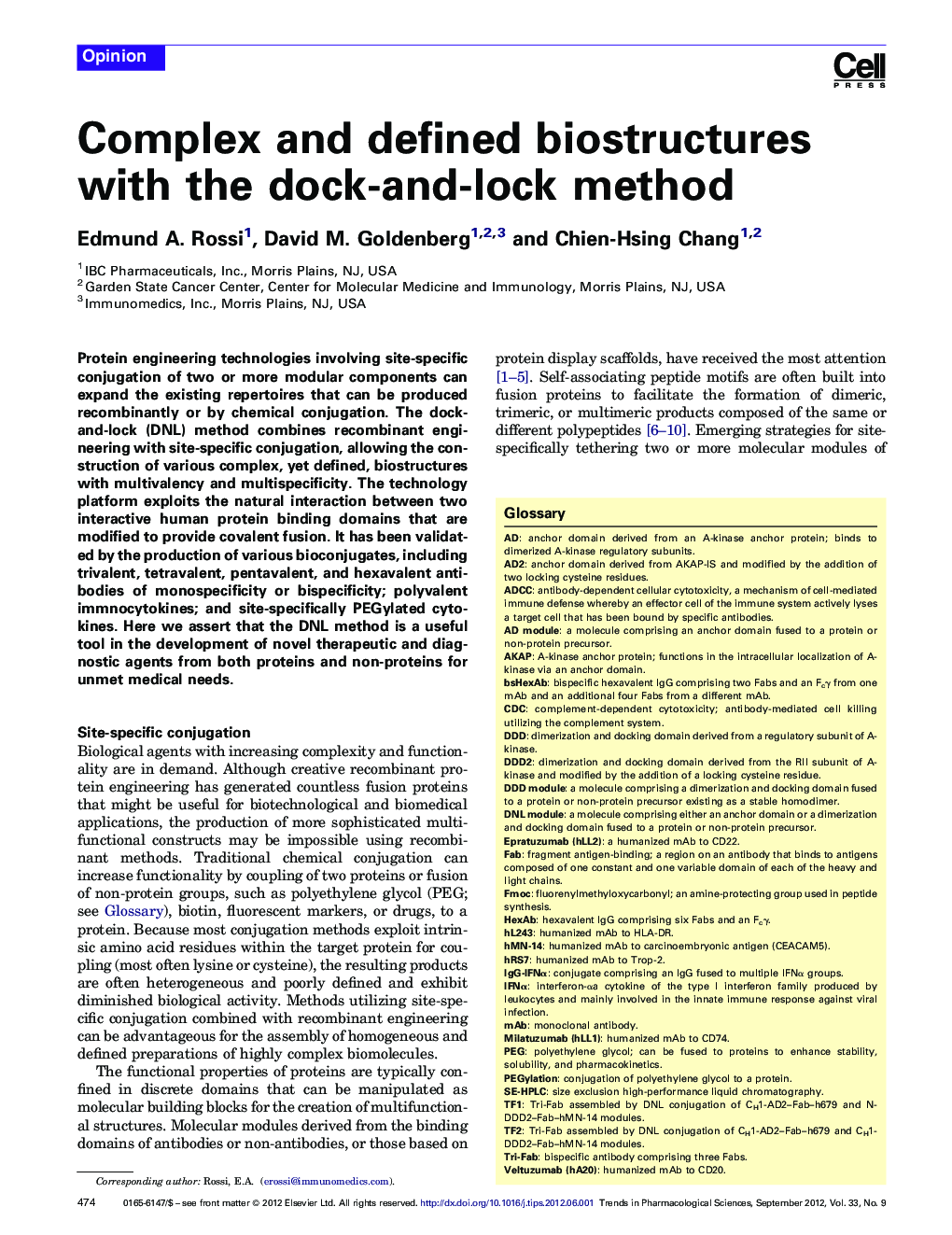| Article ID | Journal | Published Year | Pages | File Type |
|---|---|---|---|---|
| 2572844 | Trends in Pharmacological Sciences | 2012 | 8 Pages |
Protein engineering technologies involving site-specific conjugation of two or more modular components can expand the existing repertoires that can be produced recombinantly or by chemical conjugation. The dock-and-lock (DNL) method combines recombinant engineering with site-specific conjugation, allowing the construction of various complex, yet defined, biostructures with multivalency and multispecificity. The technology platform exploits the natural interaction between two interactive human protein binding domains that are modified to provide covalent fusion. It has been validated by the production of various bioconjugates, including trivalent, tetravalent, pentavalent, and hexavalent antibodies of monospecificity or bispecificity; polyvalent immnocytokines; and site-specifically PEGylated cytokines. Here we assert that the DNL method is a useful tool in the development of novel therapeutic and diagnostic agents from both proteins and non-proteins for unmet medical needs.
